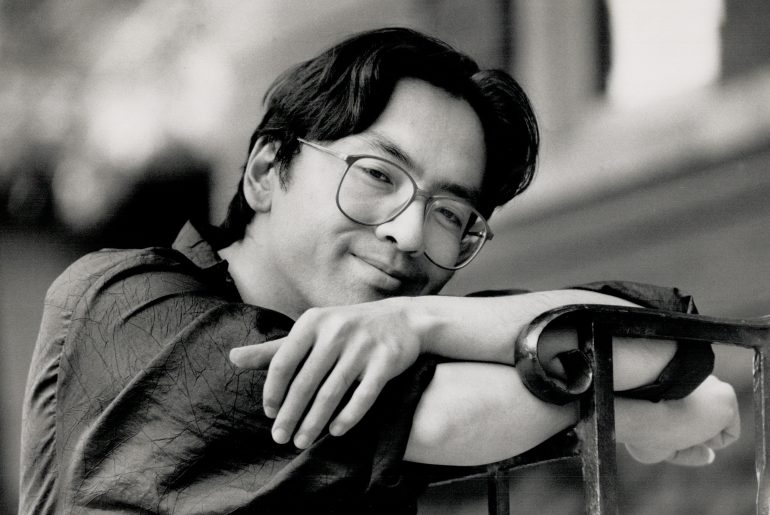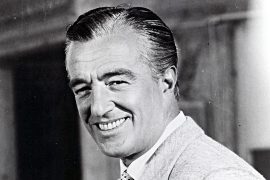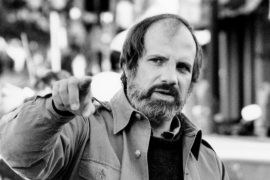(Nagasaki, 1954) British writer of Japanese origin. From the age of six he lived in England, where he received an absolutely Western academic training, from primary education to higher studies, which he attended at the University of Kent. He subsequently received a Ph.D. in Creative Writing from the University of East Anglia, where he was greatly influenced by the novelist Malcolm Bradbury, who had founded and taught these doctoral courses.
Kazuo Ishiguro began to make himself known in literary circles in the United Kingdom in the early 1980s, although he had previously managed to get articles and stories published in various literary magazines.
In 1982 he put into print his first long narrative, a novel entitled Pale Light on the Hills, which was so warmly received that it received the prestigious “Winifred Holtby” award. Her next novel, An Artist of the Floating World (1986), won another no less important award, the “Whitbread” Prize for Literature.
With these two business cards, it is not surprising that her third novel, entitled The Remains of the Day (1989), was received with high praise from English critics and readers. This novel -which brought the young Ishiguro another of the most coveted awards in the literary circles of the United Kingdom, the “Booker Prize”- constitutes a lucid and bitter reflection on the emptiness and sterility of so many human lives, reflected in the narration of a typical English butler who, in the first person, recalls the different details that have marked his work experience, to end up noting how he has wasted his life in a stupid and -what is worse- irretrievable way.
The Remains of the Day (which, due to its magnificent reception, was brought to the big screen by the American director James Ivory in 1993, under the title of The Remains of the Day), is both a terrible love story and a overwhelming vision of the impotence that a human being feels when he comes to understand that he has given up his life in exchange for having fulfilled what he believed was his duty. The success of this novel (which, in its film version, was supported by brilliant performances by Anthony Hopkins and Emma Thompson), lies not only in its extraordinary presentation of typically English characters, but also in its detailed historical reconstruction of the events after World War II.
Despite the success he had achieved with The Remains of the Day, Kazuo Ishiguro gave his literary career a courageous turnaround with the publication of his next novel, The Heartbroken (1995). Indeed, in this new narrative delivery, he opted for the introspective account of a long inner nightmare, where the weak plot line is barely enough to sustain a story in which the accumulation of facts is not of interest, but rather a background of existential oppression, halfway between surrealism and Kafkaesque fiction.
The scarce action of El disconsolado -located in a place in Europe that, due to its representative value of a whole way of living and thinking, remains undetermined- presents the hallucinating and anguished vicissitudes of a pianist who performs a concert that never reaches listening to himself, in the midst of the visions and fragmentary conversations of the people around him.
In his fifth novel, When We Were Orphans (2001), Ishiguro returned to the path of nostalgia, one of his favorite narrative obsessions, to mark the evolution of his characters. On this occasion, the plot -located in Shanghai and in the interwar period- runs from the hand of a famous London detective who tries to solve a mystery that has tormented him since childhood, the disappearance of his parents. In 2005 he published Never Let Me Go, the action of which takes place in a boarding school where youngsters who are clone “spare parts” are educated.
What did Ishiguro won the Nobel Prize for?
Kazuo Ishiguro won the 2017 Nobel Prize for Literature, and was knighted by the British monarch a year later. He is best known for the novels The Remains of the Day and Never Let Me Go, both of which have been turned into films.
Why is Kazuo Ishiguro famous?
Kazuo Ishiguro is known as one of the greatest British authors. He has received 4 ‘Man Booker Prize’ nominations. He has also won a prize for his novel ‘The Remains of the Day’ in 1989. He was also ranked on number 32 on ‘The 50 greatest British writers since 1945’ by The Times.
What inspired Kazuo Ishiguro to write Never Let Me Go?
When Ishiguro began Never Let Me Go, it was set in America in the 1950s, about lounge singers trying to make it to Broadway. “The book would both be about that world and resemble its songs,” Ishiguro says, “but then a friend came over for dinner and he asked me what I was writing.
What is the book Never Let Me Go about?
Never Let Me Go takes place in a dystopian version of late 1990s England, where the lives of ordinary citizens are prolonged through a state-sanctioned program of human cloning. The clones, referred to as students, grow up in special institutions away from the outside world.
What is the message in Never Let Me Go?
Never Let Me Go is a novel which shows what happens when a society is allowed to use scientific experimentation freely and without considering the moral implications . It’s a novel about friendship and about longing for the past, as well as a novel which allows the reader to question the ethics of human cloning.
Why is Never Let Me Go so good?
Why I Love This Novel. Never Let Me Go is outstanding in almost every way, a riveting and thought-provoking read from beginning to end that works as coming-of-age, as dystopian science fiction, and as dread-inducing horror. It also works beautifully as a literary novel.
What is Never Let Me Go a metaphor for?
Kazuo Ishiguro’s 2005 novel Never Let Me Go can be read on three levels. It can be approached as a cautionary tale about the unintended consequences of science. It can be seen as a metaphorical examination of slavery and exploitation.
How old should you be to read Never Let Me Go?
Though this book, by one of England’s most acclaimed living novelists, was written for an adult audience, the teen and young adult characters make it appealing to younger readers, and the prose is simple and straightforward enough to make it accessible to readers aged 12 and up.
Is the promised Neverland based on Never Let Me Go?
The Promised Neverland and Never Let Me Go feature similar setups, but vastly different characters and outcomes.





